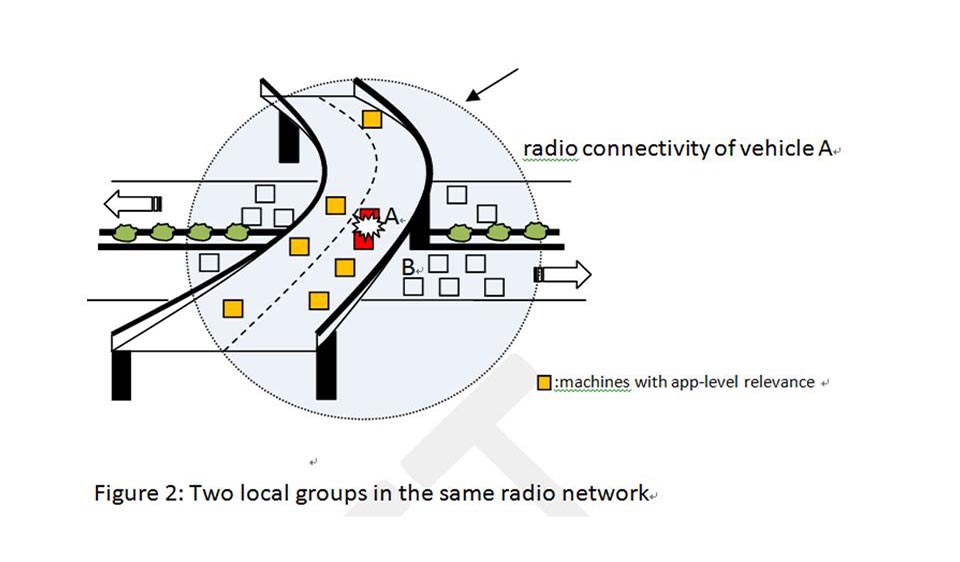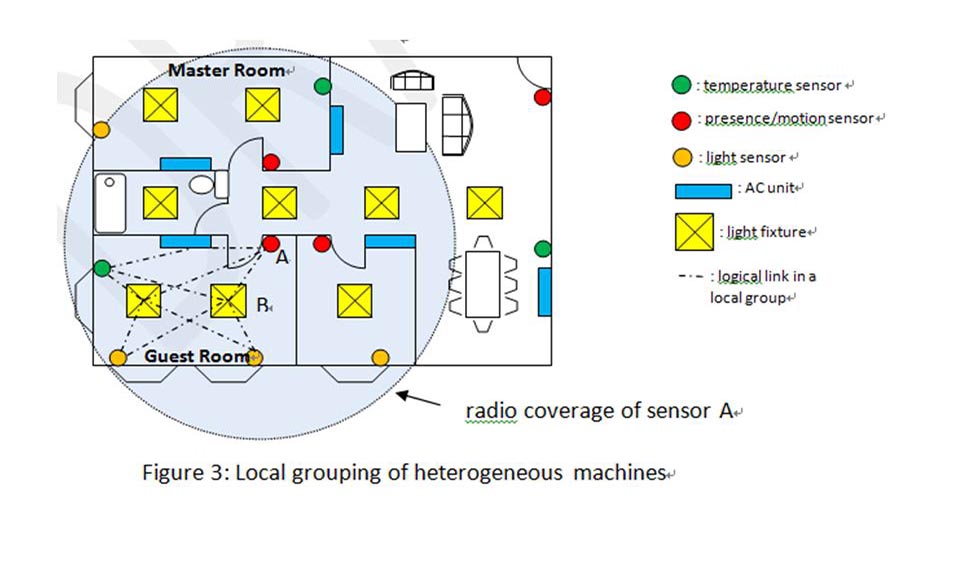Autonomous Grouping in M2M Communications
PI: Prof. 周俊廷
Intel Champions: Dr. Xingang Guo
Network creation and local grouping are two of the most critical tasks in M2M applications. Network creation is the process that machines establish radio-level connectivity with each other via standard-based radio components. Once the underlying network is created, machines can initiate communication for example, over a TCP/IP session when needed. Local grouping, on the other hand, is the process that machines with application-level relevance identify each other and work together for applications needs. Network creation is entirely determined by the radio characteristics (e.g., operating channels, transmission power) and network architecture (e.g., PHY/MAC). In general, a machine can reach a huge number of radio neighbors but has little idea about whom it should really talk to (since it does not possess the app-level, situation-specific group definition). Take vehicular applications shown in Figure 1 as an example. Machines including vehicles, traffic signs, and street lights are in the same network with radio-level connectivity. A machine, say vehicle A, can reach all other machines directly or through the road side units (or even the cloud) if necessary. However, vehicle A has little intention to do so from the perspective of upper-layer applications. It should identify and communicate with machines that are relevant at the application level. In this example, the application-level relevance, R, could be defined as R(A,B)=true for machines A and B if direction(A)~direction(B) and t > current time such that Distance(A,B)< a predefined threshold.
Relevance among machines sometimes is very complicated to be identified. For example, consider the collision warning in a different scenario shown in Figure 2. Although R(A,B)=true according to the above definition, vehicle A on the elevated expressway should not be worried about vehicle B (and any other vehicles on the plane road). In this scenario, two local groups should be formed and operate independently, even though they are supporting the same application and belong to the same network (both radio- and physical-wise).


In some M2M applications, heterogeneous machines are involved and must ``cooperate" with each to perform a given task. A local group plays an even more important functional role in these cases. Take home energy saving shown in Figure 3 as an example. The motion sensor A works with both light sensors and light fixtures in the same room to provide energy-aware lighting. Meanwhile, it also cooperates with the temperature sensor and the AC unit in order to save energy consumption on air conditioning. As far as the motion sensor's concern, most of the machines outside the guest room are of no interest to it. In this case, R(A,B)=true if type(A)=motion sensor and type (B)=light fixture, and A and B the same room.
In traditional human-to-human (H2H) communications, local groups are usually configured by human with the help of application-layer service discovery protocols, after the underlying network is created. Such a two-phase approach is not appealing in M2M communications. Take the vehicular applications as an example again. There could be hundreds or thousands of machines involved in a highly volatile environment. The underlying network topology will change rapidly and so will the corresponding local groups. In this case, any human or higher-layer involvement would introduce large latency and make local grouping obsolete. On the other hand, a purely machine-level approach seems also infeasible. For example, the formation of a local group in the guest room of Figure 3 would require certain human or application-level definition. After all, sensor A does not have the level of cognition to determine which light fixtures -- in the guest room or in the hallway --- it should control. There should be some interface for applications to provide definition of relevance or local grouping. That definition can be descriptive or procedural instruction with which machines can be grouped correctly.

Given that both network creation and local grouping deal with machine discovery --- even though one in the radio level and the other in the application level --- and they must do it in a timely and reliable fashion, a unified approach that embeds local grouping into network creation would be needed in M2M communications. With such an approach, network creation and local grouping for M2M communications can be simultaneously completed, with zero or minimized human involvement.
Members

Publications
K. Huang et al., "Analysis of a prioritized medium access control for 2-hop machine-to-machine (M2M) communication networks", in 2014 IEEE International Conference on Communications Workshops (ICC), pp. 435-440.




